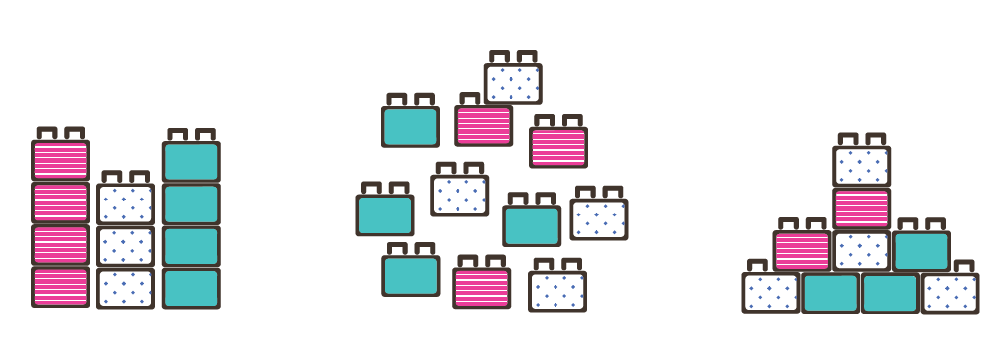How do you move from your research notes to answering your research question? This can be the most thinking-intensive part of writing a paper. It requires you to figure out:
How Does It All Fit Together?
Figuring out how it all fits together is a little like playing with Lego blocks. You gather the blocks, take them apart, play around with them, and eventually create something new.

In academia, we call the process of taking things apart analysis and the process of putting them back together synthesis. These processes are circular and involve asking a lot of questions. One question leads to another until the pieces come together.
How do you know what questions to ask? It’s not always obvious. You keep trying until you uncover something worth writing about. Below are some samples of good questions.
Analysis Questions
When you want to understand something, ask questions like these to delve deeper:
- Who...
-
has a personal stake in this?
-
knows the most about this?
-
-
What...
-
is another side of this?
-
might the consequences be?
-
-
How...
-
do I know this is true?
-
will this change the way we understand things?
-
-
When...
-
did this start?
-
might it end?
-
will it make a difference?
-
-
Where...
-
else might this be applicable?
-
in the world might this have an impact?
-
-
Why...
-
does this happen?
-
is this important?
-
has no one else looked into this?
-
Synthesis Questions
Understanding something often requires connecting it to other ideas from academic sources, fieldwork, and personal observation. Here are some strategies to make connections.
- Establish relationships
- how does one idea touch another? (in time, in space, in meaning)
- do the data relate to theories you’ve studied?
- how do ideas compare? (look for comparative words like fewer, better, stronger…)
- Identify patterns
- how is this idea similar to other texts? how is it different?
- can you see a cause-and-effect pattern? (look for words like because, since, as a result)
- is some information consistently left out or missing?
- Draw parallels
- what else does this remind you of?
- Examine intersections
- where do two very different ideas come together? what happens when they do?
- Recognize incongruities
- what’s not quite right? what doesn’t come out as expected?
Playing with these types of questions, plus some creative thought of your own, should help you figure out what you will write about.